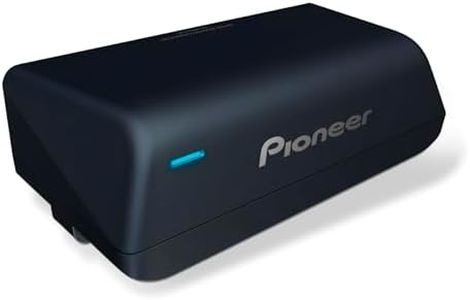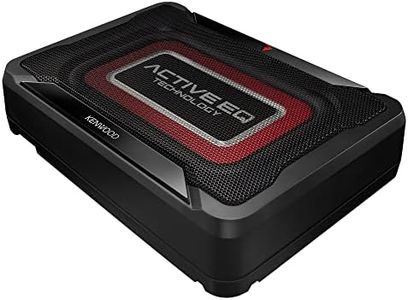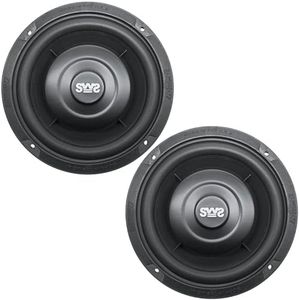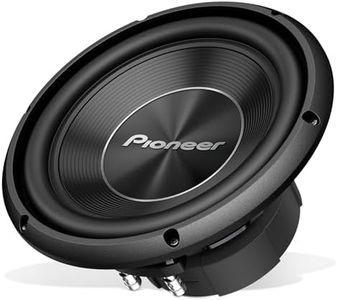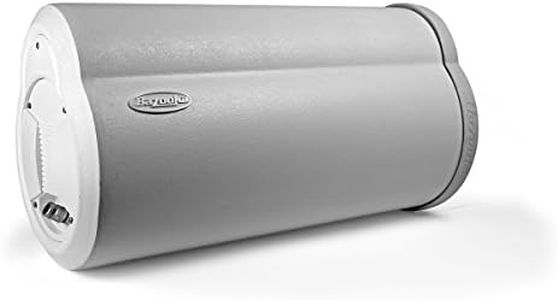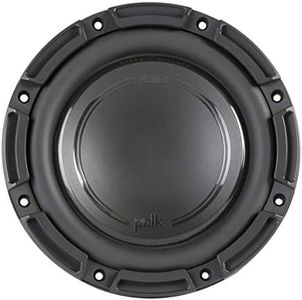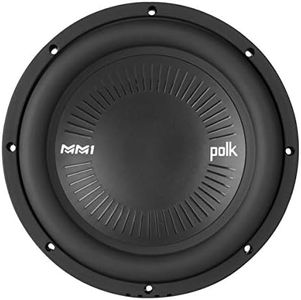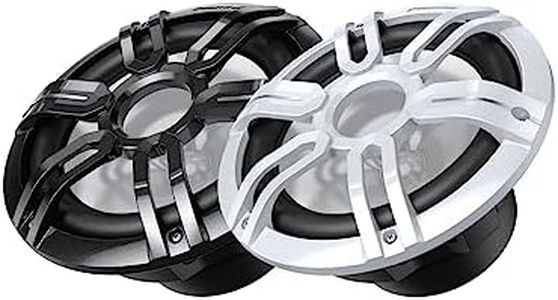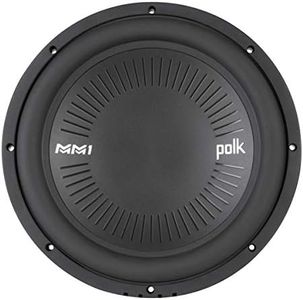We Use CookiesWe use cookies to enhance the security, performance,
functionality and for analytical and promotional activities. By continuing to browse this site you
are agreeing to our privacy policy
10 Best Marine Subwoofers
From leading brands and best sellers available on the web.By clicking on a link to a third party's website, log data is shared with that third party.
Buying Guide for the Best Marine Subwoofers
Choosing a marine subwoofer is a bit different from selecting a standard car or home subwoofer because it needs to withstand the challenging conditions of being on a boat or near water. You want something that can deliver deep, powerful bass, but at the same time, it should resist corrosion, moisture, and sun exposure. Think about where you’ll install the subwoofer, what kind of music you love, and how intense you want the bass to be. By focusing on specific features and understanding their value, you’ll be able to find a subwoofer that keeps your music sounding great, trip after trip.Water Resistance (IP Rating)The water resistance of a marine subwoofer is usually defined by its IP rating. IP stands for 'Ingress Protection,' and the number that follows tells you how well the device is protected against water and dust. This is crucial for marine environments to prevent damage from splashes, rain, and humidity. For light exposure or sheltered mounting, a basic rating like IPX5 might suffice. If you expect direct and frequent exposure to water (such as near swim platforms), look for higher ratings like IPX6 or IPX7. Pick a rating based on how close your subwoofer will be to water—more exposure means you need better protection.
Power Handling (RMS/Peak Watts)Power handling tells you how much electrical power the subwoofer can handle without being damaged. It’s typically given in two values: RMS (the amount it can handle continuously) and Peak (short bursts). This is important because a subwoofer that can handle more power delivers stronger, cleaner bass and is less likely to get distorted or damaged at higher volumes. For background listening or smaller boats, a lower power subwoofer can be enough. If you love loud, thumping bass or have a big open area, opt for higher power handling. Always choose a subwoofer with power ratings that match your amplifier.
Subwoofer Size (Diameter)The size of the subwoofer, usually measured in inches, often determines how much bass it can produce. Larger subwoofers (like 10 or 12 inches) generally move more air, resulting in deeper and louder bass. Smaller sizes (like 8 inches) still enhance your sound, but their bass is typically less intense. Consider your music preferences and available installation space. If you love strong, pounding bass and have room, a larger sub works well. For limited space or if your music doesn’t need extreme bass, a smaller size can be a perfect fit.
Impedance (Ohms)Impedance is an electrical term given in ohms (often 2 or 4 ohms for subwoofers). It describes how much the subwoofer resists the electrical current from the amplifier. This matters because matching the impedance of your subwoofer to your amplifier ensures you get the best performance without overloading your equipment. Choose the impedance that matches your amplifier's output; if you’re installing multiple subwoofers or a complex setup, understanding how impedance affects wiring is key.
Mounting Type (Free-air, Enclosed, or Sealed Box)Mounting type refers to how and where the subwoofer is installed. Free-air or infinite baffle subwoofers can be mounted directly into a panel or boat surface, using the trunk or hull as an enclosure. Other types require a dedicated sealed or enclosed box to perform properly. Free-air models save space and are great for tight areas; box-enclosed subs often give stronger, punchier bass. Decide depending on your boat's space and how much installation work you want to do.
UV and Salt ProtectionUV and salt protection means the subwoofer is built with materials that resist damage from sun and saltwater exposure. This is an essential feature for marine environments because both elements can break down ordinary speakers quickly. Look for features or materials like UV-resistant grilles and rust-proof terminals if your subwoofer will be in direct sunlight or subject to salty air. If your installation is mainly indoors or protected, this might be less of a priority.
